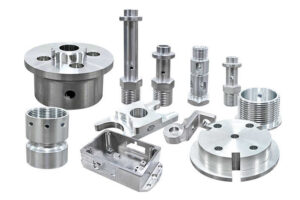Enhancing Product Aesthetics and Functionality with CNC Surface Finishing

In the world of manufacturing, achieving the perfect surface finish is crucial for both aesthetics and functionality. One technique that has revolutionized the field is CNC surface finishing. This article aims to explore the advantages and potential of CNC surface finishing, highlighting its ability to enhance product quality, improve durability, and elevate the overall customer experience.
1. Precise Control and Consistency:
CNC surface finishing offers precise control over the texture, appearance, and feel of manufactured components. With computer-controlled machinery, manufacturers can achieve consistent results by programming specific parameters for surface treatments. The automated process minimizes variations caused by human error, ensuring uniformity across batches and improving overall product quality. By maintaining strict control over surface finishes, manufacturers can meet customer expectations consistently.
2. Versatility and Customization:
CNC surface finishing provides a wide range of options for manufacturers to choose from, allowing them to customize the surface treatment to suit the desired aesthetic or functional requirements. Whether it’s a smooth mirror-like finish, a brushed texture, or a matte appearance, CNC machines can be programmed to deliver the desired surface characteristics on various materials such as metals, plastics, and composites. This versatility enables manufacturers to cater to diverse industries, including automotive, consumer electronics, aerospace, and more.
3. Improved Durability and Performance:
Surface finishing techniques offered by CNC machines not only enhance visual appeal but also improve the durability and functionality of products. For instance, CNC machining can provide coatings that increase resistance to wear, corrosion, and chemicals, thereby extending the lifespan of components. Additionally, precise surface treatments can optimize friction characteristics, reducing unwanted wear and ensuring smooth operation in mechanical applications. It can also include deburring and edge rounding processes, enhancing safety and preventing damage from sharp edges or burrs.
4. Time and Cost Saving:
CNC surface finishing provides significant time and cost-saving benefits to manufacturers. By automating the surface treatment process, CNC machines can achieve consistent results at a faster pace compared to manual methods. This reduces production lead times and increases overall efficiency. Additionally, CNC machines can optimize material usage by removing only the necessary amount of material during finishing, minimizing waste and saving costs. The precise control and repeatability of CNC surface finishing processes also reduce the need for rework, minimizing expenses associated with defects or inconsistencies.
5. Integration with CAD/CAM Systems:
It seamlessly integrates with Computer-Aided Design (CAD) and Computer-Aided Manufacturing (CAM) systems, enhancing collaboration and streamlining the manufacturing workflow. Design specifications can be directly translated into CNC programs, ensuring accurate replication of desired surface finishes. This integration enables manufacturers to rapidly adjust and modify surface treatment parameters, adapt to design changes, and maintain seamless communication between different stages of the manufacturing process. Such integration optimizes productivity, minimizes errors, and facilitates efficient production planning.
Conclusion:
It has revolutionized the manufacturing industry by providing precise control, versatility, and customization options for achieving impeccable surface finishes. This technique enhances product aesthetics, improves durability, and elevates the overall customer experience. By leveraging CNC machines’ capabilities, manufacturers can consistently deliver high-quality components that meet customer expectations in various industries. The time and cost-saving benefits, along with the integration with CAD/CAM systems, make CNC surface finishing a valuable tool for manufacturers striving for excellence in today’s competitive market. Embracing the potential of CNC surface finishing can transform products from ordinary to outstanding, setting them apart in terms of both appearance and performance.






